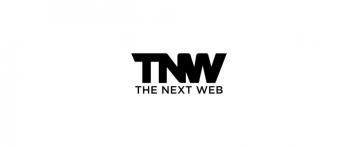Venture Capital Research: Investor Preferences and Startup Success Factors Revealed

This piece emphasizes that successful fundraising requires more than just presenting a business idea; it involves creating a sense of urgency for investors. The pitch deck is crucial as a first impression, needing to quickly capture attention, build trust, and demonstrate potential within three minutes. Effective pitch deck templates are rare, with many being flawed.
The article introduces a unique template created by Peter Thiel, a highly successful figure in startup investing. Thiel's 2012 pitch deck for a real startup, outlining his view on structuring a founder's story, is largely unknown. The author analyzed this deck slide by slide and offers a modern adaptation used by many founders to raise millions.
The piece details Thiel's template, highlighting key elements like social proof on the cover, combining problem and solution, emphasizing the team's execution ability, showcasing product growth and economics, defining a large market, analyzing competition, outlining barriers to entry, presenting funding history, articulating a future vision, providing data room access, and including a logical financial model.
Furthermore, the article provides data-backed insights on pitch deck best practices, such as keeping them concise (12-14 slides), leading with clarity, using visuals, and focusing on the team, financials, and market opportunity, as these are where investors spend the most time. It concludes by suggesting adaptations for live presentations and the essential inclusion of traction and funding ask slides.
The pitch deck is described as the crucial first step in this process. It's likened to an audition, a first impression, and a chance to stand out from the crowd. The author emphasizes that this initial presentation needs to quickly capture attention, build trust, and demonstrate the startup's potential, all within a concise three-minute timeframe.
The article then highlights the difficulty of finding effective pitch deck templates, noting that many are either too complex, outdated, or lack specific guidance.
In contrast, this piece introduces a different kind of template, one created by Peter Thiel, a prominent figure in startup investing known for co-founding PayPal, being an early investor in Facebook, and backing numerous successful "unicorn" companies. The author points out Thiel's impressive track record, including turning a $500,000 investment into over $1 billion.
The author reveals that in 2012, Peter Thiel created a complete pitch deck for an actual startup, outlining his specific vision for how founders should structure their narrative. The article emphasizes the rarity of this knowledge.
The author then details their analysis of Thiel's pitch deck, slide by slide, and mentions a modern adaptation of this template that thousands of founders are reportedly using to secure millions in funding.
The piece encourages readers to access this template by providing their email address. It further reinforces Thiel's credibility by listing his achievements, including co-founding PayPal with Elon Musk, building Palantir, and early investments in major companies like LinkedIn and Stripe.
The author stresses that Thiel's expertise goes beyond just operating companies; he possesses a sharp understanding of startup investing, and his 2012 pitch deck offers valuable insights into what he looks for in early-stage startups, beyond superficial trends.
The article then proceeds to break down Thiel's original pitch deck slide by slide, offering analysis and key takeaways for each section, along with examples. These slides cover aspects like the cover, problem & solution, team, product, market, opportunity & competition, barriers to entry, funding history, future vision, contact & data room access, and the financial model.
Finally, the piece includes bonus insights based on data regarding pitch decks, such as the average time investors spend reviewing them, the slides they focus on most, the ideal length of a successful deck, and the importance of a clear narrative and team. It also touches on seed funding trends and the impact of a well-crafted pitch deck on fundraising success. The author concludes with final thoughts on adapting Thiel's template for live presentations and recommends adding slides for traction and the funding amount being raised.






































































EgyptInnovate site is not responsible for the content of the comments